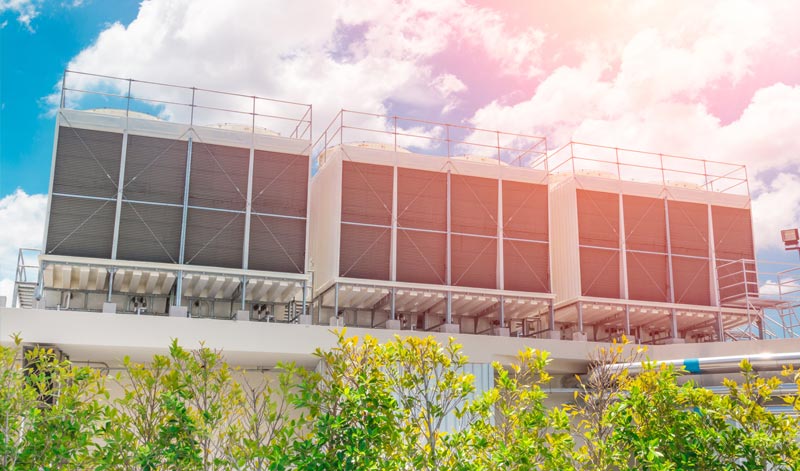
Optimizing Chiller System Performance
Chillers provide critical cooling for air conditioning and refrigeration, but they use a substantial amount of energy. If your energy budget is feeling the heat, take steps to improve chiller systems performance and save money.
A number of chiller system design changes and operational strategies will help to improve overall system efficiency and reduce energy costs. Two of the most effective involve fans and economizers.
Fan speed
In cooling towers, two-speed fan motors in combination with fan cycling provides improved control and efficiency over fan cycling alone. Variable frequency drives (VFDs) provide the most efficient method of control. Fan speed control is most effective in facilities with small cooling loads, and in moderate or dry climates.
Economizers
Chiller bypass systems can be retrofitted into central plants, enabling waterside economizers to cool spaces with chillers offline. In these systems, the cooling tower alone provides chilled water directly with filtering or indirectly with a heat exchanger. These systems are best suited to applications with significant chilled water requirements and in climates where the outdoor temperature is below 55°F for at least 3,000 hours a year.
More ways to save
Additional ways to improve chiller efficiency include:
- Reduce the temperature set point of condenser water. Check with the manufacturer to make sure the chiller will operate properly at a lower temperature.
- Replace oversized water impellers pumps and motors with smaller, energy-efficient units.
- Trim the pump impeller rather than using a balancing valve to reduce flow and pump power.
- Install VFDs on water pump motors, compressors and fan motors.
- Convert single-loop chilled water and water flow configurations of the condenser to primary/secondary loop configurations.
- Replace three-way valves with two-way valves on cooling coils and implement VFDs on the chilled water secondary loop pumps to regulate flow.
- Consider thermal storage (chilled-water storage tanks above 500,000 gallons) and check with your utility about rebate programs.
- Increase wall insulation by adding an exterior insulation and finish system. Include a drainage layer to accommodate for small leaks occurring over time; avoid barrier-type systems.
Savings achieved by downsizing the chiller can help pay for these energy improvements.